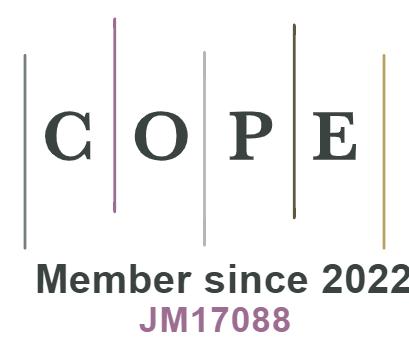REFERENCES
1. Wang X. Design of pavement structure and material for full-scale test track. J Highw Transp Res Dev. 2017;34:30-7.
2. Fu G, Zhao Y, Zhou C, Liu W. Determination of effective frequency range excited by falling weight deflectometer loading history for asphalt pavement. Constr Build Mater. 2020;235:117792.
3. Habbouche J, Hajj EY, Sebaaly PE, Morian NE. Damage assessment for M-E rehabilitation design of modified asphalt pavements: challenges and findings. Transp Res Rec. 2018;2672:228-41.
4. Huang W, Liang S, Wei Y. Surface deflection-based reliability analysis of asphalt pavement design. Sci China Technol Sci. 2020;63:1824-36.
5. Vyas V, Singh AP, Srivastava A. Prediction of asphalt pavement condition using FWD deflection basin parameters and artificial neural networks. Road Mater Pavement Des. 2021;22:2748-66.
6. Liu H, Cao J, Huang W, Shi X, Zhou X, Li Z. A multidimensional framework for asphalt pavement evaluation based on multilayer network representation learning: a case study in RIOHTrack. Expert Syst Appl. 2024;237:121370.
7. Wang W, Zhang H, Li T, et al. An interpretable model for short term traffic flow prediction. Math Comput Simul. 2019;171:264-78.
8. Li Z, Korovin I, Shi X, Gorbachev S, Gorbacheva N, Huang W. A data-driven rutting depth short-time prediction model with metaheuristic optimization for asphalt pavements based on RIOHTrack. IEEE/CAA J Autom Sin. 2023;10:1918-32.
9. Li Z, Cao J, Shi X, Huang W. QPSO-AHES-RC: a hybrid learning model for short-term traffic flow prediction. Soft Comput. 2023;97:9347-66.
10. Yang Y, Li Z, Chen J, Liu Z, Cao J. TRELM-DROP: an impavement non-iterative algorithm for traffic flow forecast. Physica A. 2024;633:129337.
11. Pan JS, Zhang Z, Chu SC, Zhang SQ, Wu JMT. A parallel compact marine predators algorithm applied in time series prediction of Backpropagation neural network (BNN) and engineering optimization. Math Comput Simulat. 2024;220:65-88.
12. Saltan M, Terzi S. Modeling deflection basin using artificial neural networks with cross-validation technique in backcalculating flexible pavement layer moduli. Adv Eng Softw. 2008;39:588-92.
13. Lv Y, Duan Y, Kang W, Li Z, Wang FY. Traffic flow prediction with big data: a deep learning approach. IEEE Trans Intell Transp Syst. 2015;16:865-73.
14. Ma X, Tao Z, Wang Y, Yu H, Wang Y. Long short-term memory neural network for traffic speed prediction using remote microwave sensor data. Transp Res Part C Emer Technol. 2015;54:187-97.
15. Yang Q, Deng Y. Evaluation of cracking in asphalt pavement with stabilized base course based on statistical pattern recognition. Int J Pavement Eng. 2019;20:417-24.
16. Karballaeezadeh N, Ghasemzadeh Tehrani H, Mohammadzadeh Shadmehri D, Shamshirband S. Estimation of flexible pavement structural capacity using machine learning techniques. Front Struct Civ Eng. 2020;14:1083-96.
17. Tang X, Yang X. Inverse analysis of pavement structural properties based on dynamic finite element modeling and genetic algorithm. Int J Transp Sci Technol. 2013;2:15-30.
18. Mabrouk GM, Elbagalati OS, Dessouky S, Fuentes L, Walubita LF. Using ANN modeling for pavement layer moduli backcalculation as a function of traffic speed deflections. Constr Build Mater. 2022;315:125736.
19. Zhang J, Cao J, Huang W, Shi X, Ji X, Zhou X. A hybrid framework for asphalt pavement rutting prediction modeling and influencing factors analysis based on multilevel wavelet decomposition and transfer entropy. Appl Math Model. 2023;121:714-30.
20. Li M, Dai Q, Su P, You Z, Ma Y. Surface layer modulus prediction of asphalt pavement based on LTPP database and machine learning for Mechanical-Empirical rehabilitation design applications. Constr Build Mater. 2022;344:128303.
21. Li Z, Shi X, Cao J, Wang X, Huang W. CPSO-XGBoost segmented regression model for asphalt pavement deflection basin area prediction. Sci China Technol Sci. 2022;65:1470-81.
22. Zhang J, Cao J, Huang W, Shi X, Zhou X. Rutting prediction and analysis of influence factors based on multivariate transfer entropy and graph neural networks. Neural Netw. 2023;157:26-38.
23. Shen C, Jiang B, Yue L. LSTM combined with BIM technology in the management of small and medium-sized span highway concrete beam bridges. Results Eng. 2023;20:101539.
24. Sharma A, Sachdeva SN, Aggarwal P. Predicting IRI using machine learning techniques. Int J Pavement Res Technol. 2023;16:128-37.
25. Tommasi T, Orabona F, Caputo B. Learning categories from few examples with multi model knowledge transfer. IEEE Trans Pattern Anal Mach Intell. 2013;36:928-41.
27. Finn C, Abbeel P, Levine S. Model-agnostic meta-learning for fast adaptation of deep networks. arXiv 2017. pp. 1126-35.
28. Vinyals O, Blundell C, Lillicrap T, Kavukcuoglu K, Wierstra D. Matching networks for one shot learning. arXiv 2016.
30. Santoro A, Bartunov S, Botvinick M, Wierstra D, Lillicrap T. Meta-learning with memory-augmented neural networks; 2016. Available from: https://proceedings.mlr.press/v48/santoro16.pdf [Last accessed on 28 Dec 2024].
31. Ravi S, Larochelle H. Optimization as a model for few-shot learning; 2016. Available from: https://openreview.net/forum?id=rJY0-Kcll [Last accessed on 28 Dec 2024].
32. Nichol A, Schulman J. Reptile: a scalable metalearning algorithm. arXiv 2018. Available from: https://yobibyte.github.io/files/paper_notes/Reptile___a_Scalable_Metalearning_Algorithm__Alex_Nichol_and_John_Schulman__2018.pdf [Last accessed on 28 Dec 2024].
33. Chu X, Cai F, Cui C, Hu M, Li L, Qin Q. Adaptive recommendation model using meta-learning for population-based algorithms. Inf Sci. 2019;476:192-210.
34. Yu H, Zhang Q, Liu T, Lu J, Wen Y, Zhang G. Meta-ADD: a meta-learning based pre-trained model for concept drift active detection. Inf Sci. 2022;608:996-1009.
35. Lee Y, Choi S. Gradient-based meta-learning with learned layerwise metric and subspace. arXiv 2018. pp. 2927-36.
36. Gordon J, Bronskill J, Bauer M, Nowozin S, Turner RE. Meta-learning probabilistic inference for prediction. arXiv 2018.
37. Bertinetto L, Henriques JF, Torr PHS, Vedaldi A. Meta-learning with differentiable closed-form solvers. arXiv 2018.
38. Lee K, Maji S, Ravichandran A, Soatto S. Meta-learning with differentiable convex optimization. In Proceedings of the 2019 IEEE/CVF Conference on Computer Vision and Pattern Recognition (CVPR); 15-20 June 2019; Long Beach, CA, USA. pp. 10657-65.
39. Aguiar GJ, Santana EJ, de Carvalho ACPFL, Barbon Junior S. Using meta-learning for multi-target regression. Inf Sci. 2022;584:665-84.
40. Jeong D, Bae S. Estimating battery state-of-charge with a few target training data by meta-learning. J Power Sources. 2023;553:232238.
43. Grant E, Finn C, Levine S, Darrell T, Griffiths T. Recasting gradient-based meta-learning as hierarchical bayes. arXiv 2018.
44. Rusu AA, Rao D, Sygnowski J, et al. Meta-learning with latent embedding optimization. arXiv 2018.
45. Morcos AS, Raghu M, Bengio S. Insights on representational similarity in neural networks with canonical correlation. arXiv 2018.
46. Kornblith S, Norouzi M, Lee H, Hinton G. Similarity of neural network representations revisited. arXiv 2019. pp. 3519-29.
47. Yang J, Wang X, Luo Z. Few-shot remaining useful life prediction based on meta-learning with deep sparse kernel network. Inf Sci. 2024;653:119795.
49. Wong E, Rice L, Kolter JZ. Fast is better than free: Revisiting adversarial training. arXiv 2020.
50. Andriushchenko M, Flammarion N. Understanding and improving fast adversarial training. arXiv 2020.
51. Carmon Y, Raghunathan A, Schmidt L, Liang P, Duchi JC. Unlabeled data improves adversarial robustness. arXiv 2019.
52. Uesato J, Alayrac JB, Huang PS, Stanforth R, Fawzi A, Kohli P. Are labels required for improving adversarial robustness? arXiv 2019.
53. Chan A, Tay Y, Ong YS. What it thinks is important is important: Robustness transfers through input gradients. In Proceedings of the 2020 IEEE/CVF Conference on Computer Vision and Pattern Recognition (CVPR); 13-19 June 2020; Seattle, WA, USA. pp. 332-41.
54. Utrera F, Kravitz E, Erichson NB, Khanna R, Mahoney MW. Adversarially-trained deep nets transfer better: Illustration on image classification. arXiv 2020.
55. Salman H, Ilyas A, Engstrom L, Kapoor A, Madry A. Do adversarially robust imagenet models transfer better? arXiv 2020.







